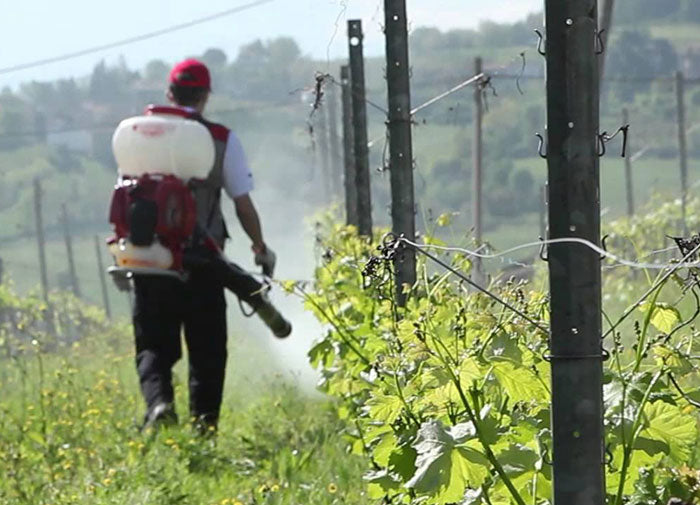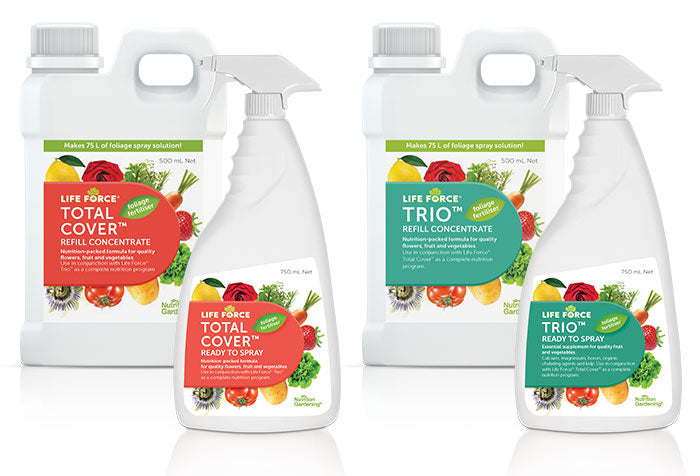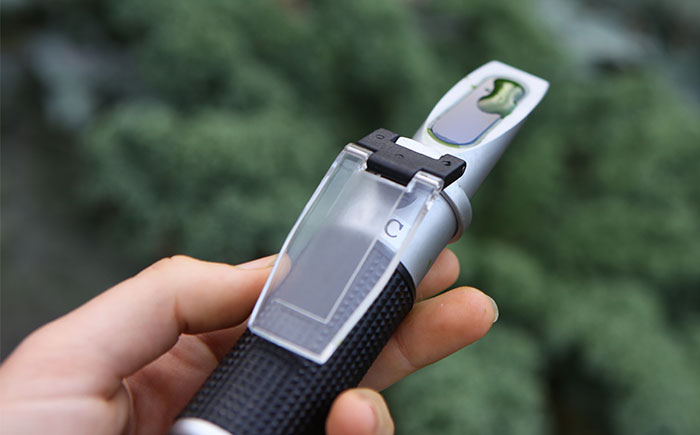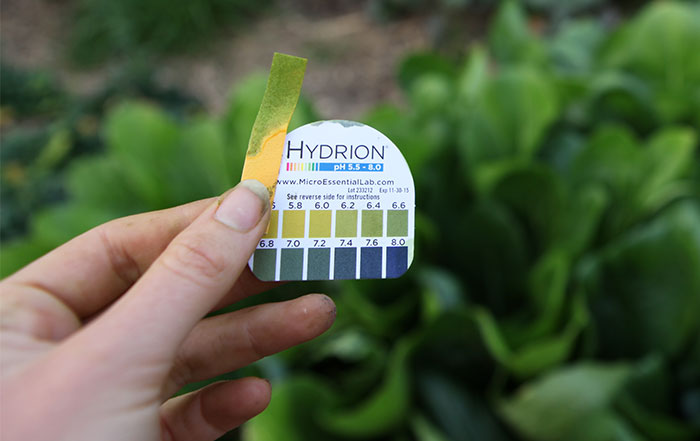Ten Tips for a Problem-Free, Super Productive Home Garden (Part 2)

In the second part of this four-part feature, we will look at more strategies to maximise the nutrient density and production of your home grown food, while optimising your gardening fun. Newcomers are often discouraged by a spindly, pest-prone first crop. This article is designed to ensure the opposite.
5) Direct inject your nutrition
We literally are what we eat, and what we eat comes from soils that are often sadly depleted. However, the issue of growing our own nutrition is not just about addressing what is missing from the soil. Sometimes it is about compensating for our excesses.
There is a powerful interplay between minerals, where one mineral can affect the uptake of several others, either positively or negatively. Excesses of one mineral in your garden, for example, can negatively affect the uptake of several others. Phosphate is a great example, as it is so often oversupplied in the home garden. When we overdo this mineral with too much pelletised chicken manure, we inadvertently shut down the uptake of calcium, potassium, zinc, iron and copper. Calcium and copper are critical for disease resistance in plants and all five minerals are important for the resilience of your family.
The solution here is to ensure optimum plant nutrition by bypassing the soil and injecting complete nutrition directly into the leaf. In much the same way that transdermal magnesium is ten times more efficient than oral supplementation for our bodies, foliar fertilising is 12 times more efficient than mineral delivery via the soil.
Applying nutrition to the leaf might seem like another job in our time starved worlds, but the secret is to make it easy. Your wrists will soon burn when squeezing a 1 L spray bottle to foliar feed your food crops, so choose something more efficient and less tiresome, right from the start. A good quality backpack with a lever pump is one good option, but you might also consider a motorised spray mister to seriously fast-track this direct inject approach. This is one time when cost should not be your limiting factor. Your garden is your ultimate wellness tool. Consider the cost of the degenerative illness you may be sidestepping, and you will soon appreciate this protective perspective.

Choose Complete Foliar Nutrition – Don't be Lost Without a Trace
The most constructive approach in the production of nutrient dense, medicinal food with forgotten flavors, involves covering all bases. You need the full spectrum of minerals in your food, including a complete range of trace minerals. Trace minerals are spark plugs that trigger multiple processes related to plant health, including plant immunity. They are equally important in our own wellness and resilience, and the plant is infinitely superior to the supplement bottle as a pathway to improved health and longevity. Plant-derived minerals are 98% bioavailable, while those from the bottle have less than half that efficiency. We were simply supposed to derive our nutrition from our food, as the founder of modern medicine, Hippocrates, so eloquently suggested "Let your food be your medicine and your medicine be your food".
Choose a foliar fertiliser that covers as many bases as possible. Unfortunately, it is not possible to include all minerals in a single formula, because of incompatibilities between major minerals like calcium and phosphate. However, two foliar fertilisers, alternated each week or two, can deliver total nutrition.
Life Force® Total Cover™, from NTS, is part one of this twin-pack approach. This revolutionary foliar fertiliser will make you a direct-inject convert after the very first application because the visual response is so pronounced. This complex formula comprises over 30 ingredients, including major minerals, chelated micronutrients, natural plant growth promoters, humates, vitamins, amino acids and kelp. The only minerals missing are calcium and magnesium, as they are incompatible with the phosphorus found in Total Cover™.
Life Force® Trio™ is the second component of this powerful twin-pack. This foliar fertiliser features the chelated calcium and magnesium missing in Total Cover™, and it also contains a little extra boron (a mineral seriously deficient in most home gardens). Both fertilisers are diluted at 1 part to 150 parts of water so a 500 mL bottle of concentrate produces 75 L of useable foliar fertiliser. This is usually sufficient for a full crop cycle.

6) Measure for mastery
When you understand the importance of wholesome home food production, it becomes clear that mastery of this process can be a priceless asset. Just as you can benefit from the precision nutrition that comes from testing your blood, hair, saliva or urine to determine your requirements, you should not drive blind in your food garden. You can measure for mastery in your garden crops with two simple, inexpensive monitoring tools.
The Refractometer
This 15 cm tube-like viewing device measures nutrient density. It is literally measuring your skills as a food producer. You simply squeeze some juice from the leaf of your food crop with a garlic press, and place a few drops of juice on the sloping screen of this sawn-off telescope. Close the hinged flap over the juice-covered screen and look through the lens, while aiming the device toward the sun.
Sunlight refracts off the dissolved solids in the plant sap and you are measuring something called degrees of brix. Brix levels are a direct guide of food value. The higher the brix levels, the more flavorsome the food, the greater the medicinal value and the longer the shelf-life. This simple, easy-to-use tool offers direct feedback as to your growing skills. It can also be a great way to monitor the success or effectiveness of whatever you apply to your garden, i.e., you will usually see a marked rise in brix levels following an application of a complete fertiliser like Life Force® Total Cover™. This invaluable tool can also reduce the stress associated with battling bad bugs. The higher the brix levels, the lower the pest pressure, as insects and disease generally arrive when nutrition is substandard.

The refractometer can also be used as a meter to monitor the most important of all minerals, calcium. When you look through the eyepiece, you are looking at something similar to an old school fuel gauge (see picture). If the brix levels are low, you are literally lacking the fuel to optimise your crop. However, you can observe more than this. If the line that intersects the two hemispheres is stark and distinct, then you are lacking calcium, the trucker of all minerals. The intersecting line should always be indistinct. In fact, you are trying to fuel the fuzz. There's a t-shirt phrase with a difference! A fuzzy line spells good calcium and good mineralisation and, as such, it will also herald a problem-free crop and a smile on your face.
Sap pH as a Problem Solver
Brilliant American Scientist, Bruce Tainio, discovered that the pH of plant sap can be an invaluable guideline as to crop quality, resilience and productivity. There is a specialist meter developed to measure plant sap pH in agriculture, but it is too expensive for all but the most avid of home garden enthusiasts.
However, there is an incredibly cheap option to monitor sap pH from upper and lower leaves. This involves purchasing a set of NTS pH Test Strips for $4.95 (AUD). These are a little different from the common pH strips used to monitor swimming pools, because they measure in finer gradients (i.e., increments of 0.1). Here, you simply squeeze sap from the top and bottom leaves with a garlic crusher and then separately drip this sap onto the two pH strips. The colour change on the strips will indicate relative pH. If the bottom leaves have a lower pH than the top leaves (according to the chart supplied), then you have, in all likelihood, identified a potassium deficiency and it is time to act.

You will not believe how productive this simple test may prove, because you are achieving fingertip control of a major mineral. For example, the brown spot that so often appears on the lower leaves of your tomato, capsicum, eggplant and potato plants, is a classic symptom of potassium deficiency. This super mobile mineral has departed the lower leaves, dropped the sap pH and called in the disease organisms. You can foliar spray Life Force® Organic Blooms™, or a similar potassium based fertiliser to address this shortage.
In Part 3 of this article, we will look at why organic matter matters – including compost, mulching, and humic acid.
To read Part 3 of this article, please click here.
To go back to Part 1 of this article, please click here.
Sign up to our e-newsletter to receive the latest articles, product updates and exclusive offers from NTS. Every new subscription receives a free digital copy of Graeme Sait's book, 'Nutrition Rules!'. CLICK HERE TO SUBSCRIBE
